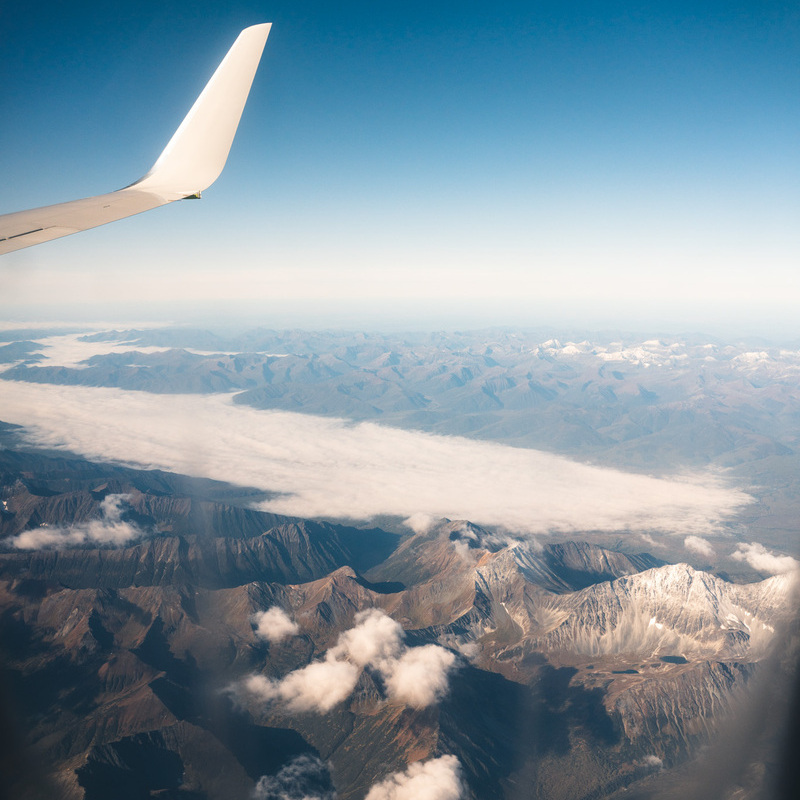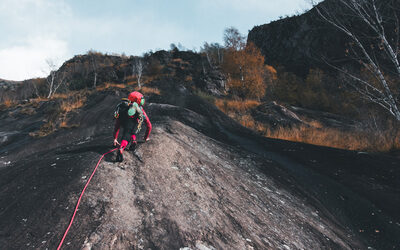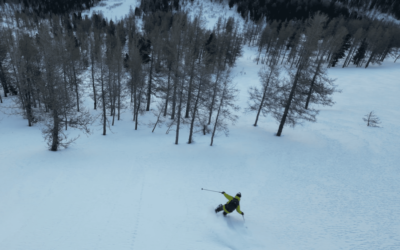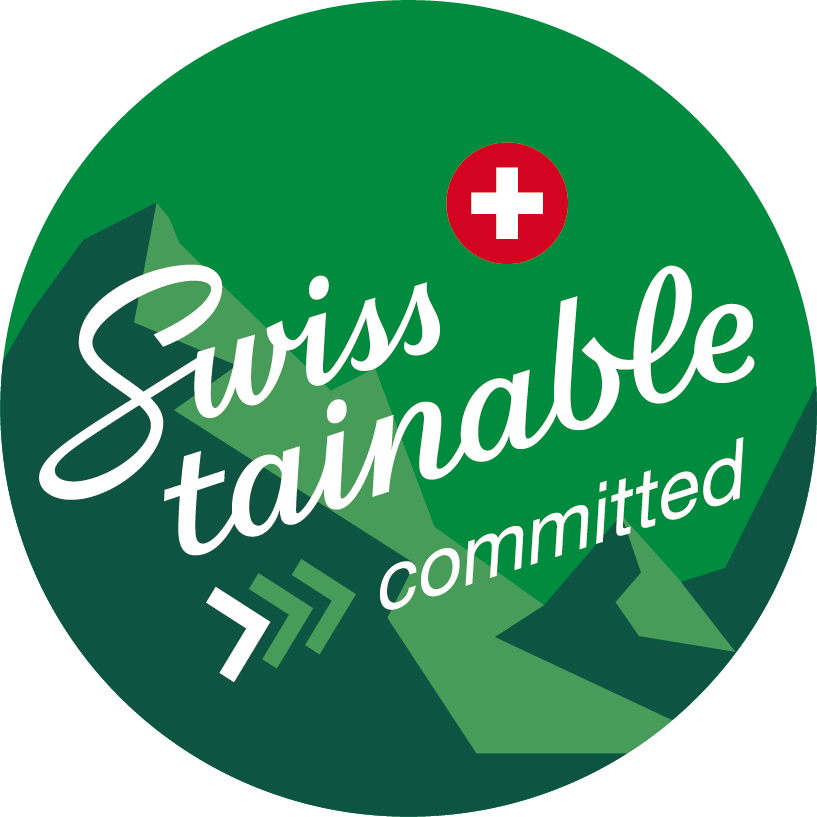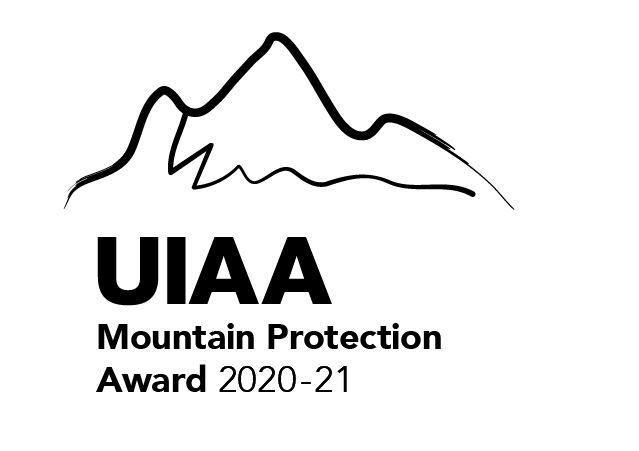AMA DABLAM EXPEDITION
Trip type: High altitude mountaineering
Duration: 26 days
Height: 6812 m
Country/Region: Nepal, Khumbu
Price: From 8´900 CHF p.P.
Participants: 2-8
Dates
or on request
The Ama Dablam is also known as the “Matterhorn” of Nepal and is one of the most beautiful mountains in the world. Together we climb this mythical mountain on a challenging and technical expedition.
Requirements:

Hiking

Up to 6 Hrs./day
Wild camping

Experience advantageous
Technical difficulties

The climbing is extremely challenging and exposed. Safe climbing with crampons and surefootedness are required!
Fitness

Fit enough to carry a 14 kg backpack
Ama Dablam Expedition 6812 m – your ascent in the Nepalese mountaineering Eden
The first ascent of the Ama Dablam was made on March 13, 1961 by an expedition led by Mike Gill, with the participation of Barry Bishop, Mike Ward and Wally Romanes. The expedition was a joint effort between New Zealand, the United Kingdom and the USA. This historic ascent helped to establish Ama Dablam as a challenging and prestigious destination for climbers worldwide.
Over the years, the Ama Dablam has become a symbol of the beauty and challenges of the Himalayas. The local population regards the mountain as sacred and the sight of it has a deep-rooted spiritual significance. In Sherpa culture, Ama Dablam is regarded as the abode of the gods.
The mountain rises majestically at 6.812 meters and is known for its characteristic shape, which translates as “mother and her necklace”.
We start in Lukla and hike slowly up the Dudh Kosi valley. On the way, we spend the night in teahouses and in 2-person tents at the base camp. After a few days of hiking, we reach the small village of Dushanbe, which is idyllically situated and offers incredible views of Ama Dablam and as far as Everest. Here we spend several days acclimatizing by climbing neighbouring peaks and considering an ascent of the Lobuche East. Finally, we hike to the base camp of Ama Dablam, where our expedition really begins. For the ascent to the summit, we take the standard route. This takes us via airy passages and exposed climbing to the summit. A pure climbing pleasure for ambitious high-altitude mountaineers!
Together on the Ama Dablam
Ama Dablam, also known as the “Matterhorn of Nepal”, is one of the most popular peaks for high-altitude mountaineers in the Khumbu region of eastern Nepal. With an altitude of 6812 m, it is a prime choice for experienced climbers seeking the challenge of a summit ascent in this majestic mountain region.
Your benefits with Exped Tribe:
Local and multilingual mountain guide
Support member
who will document the trip with professional recordings and look after your well-being. You will receive drone videos, photos and much more as a souvenir of your adventure.
Small groups
of max. 8 participants. Increased flexibility, familiar atmosphere and harmonious get-together. We do our best to ensure that all participants have an incredible adventure! We conduct expectation phone calls and pool participants who have similar expectations and abilities. We are happy to accept special requests!
Vegetarian friendly
We offer Alpine gourmet cuisine, completely without meat/fish!
Co2 compensation
Planting of several trees per participant. You will receive a certificate of your trees and will be able to follow their growth.
Rental materials
Cost-effective rental materials such as sleeping bags, climbing equipment and much more are available.
Schedule of the Ama Dablam Expedition
Important info about your Ama Dablam climb
Clothing
- Hard shell jacket
- Down jacket
- Functional underwear
- Long and short hiking pants, quick-drying
- Long and short shirts, quick-drying
Soft shell or fleece jacket - Hat, gloves
Miscellaneous
- Sunglasses
- Sun and lip cream
- Water bottle and thermos flask
- Camera and power bank if necessary
- Backpack (80-110l)
Technical equipment
- Telescopic poles
- Suitable mountain boots with inner shoe (we will be happy to advise you) and hiking boots/trail shoes
- Gaiters
- Crampons (12 points)
- 3 pear-shaped carabiners
- Climbing harness
- 1 Jumar device (ascender)
- Abseiling device – such as a Tuber, Reverso or ATC
- Cordelette for the third-hand knot when abseiling
- “Cow tail” made from dynamic webbing sling/rope (10-11 mm diameter)
- Warm gloves
- Thick mittens
- Ice axe
- helmet
For the overnight
- Warm sleeping bag (comfort temperature -15°)
- Sleeping mat (insulated)
- ISO mat
- Headlamp
- Toiletries (reduced to a minimum)
- Other camping material, if available
Included
- Local English-speaking trekking leader and mountain guide + Exped Tribe guide
- Full board
- Overnight stay in teahouse and huts along the trail, overnight stay in tent on the ascent, hotel on arrival and departure
- All transfers from Kathmandu, Nepal
- Professional photo reportage and videos
- An activity to support the local community
- Group equipment (expedition tents, stoves, etc.)
- Co2 compensation with the planting of 10 trees/participant
- Accommodation in Kathmandu for 3 nights, including breakfast, in a 4-star hotel, accommodation during the trekking tour in teahouses/lodges and at base camp in a 2-person tent
- Flight tickets: Kathmandu – Lukla – Kathmandu including airport tax
- Porters (one porter for every 2 participants)
- Sagarmatha National Park entrance fee and Khumbu permit fee
- Applicable local and government taxes
- Welcome dinner in Kathmandu
Excluded
- Travel to and from the destination country
- Private insurance with repatriation costs covered
- Alcoholic beverages
- Tips for local activities and local guide
- Visa on arrival in Nepal
- Meals in Kathmandu, except for the welcome dinner and breakfast at the hotel
- Everything not listed under “Included”
Catering
- Snack (not included, serves to replenish energy levels): This is eaten between breakfast and dinner and taken with you for the appropriate number of days. Dried fruit, chocolate, cheese, wholemeal bread and energy bars are all suitable. Remember that your rucksack should not be too heavy.
- Full board (included): Out of commitment to animal welfare, we do not offer fish/meat on our tours. Nevertheless, you can of course order what you like best at the local restaurants, whether vegetarian or of animal origin. You are also welcome to bring and eat your own food of animal origin at any time.
Rental material
- Telescopic poles, CHF 55.00
- Expedition backpack (90-110l), CHF 80.00
- Sleeping bag, CHF 180.00
- Climbing material, CHF 80.00
Others, Add-ons
This adventure can be enhanced with the following on request:
- Kathmandu culinary tour
Frequently asked questions about the Ama Dablam Expedition
How difficult is it to climb Ama Dablam?
The ascent of Ama Dablam can be considered physically demanding and requires advanced climbing skills. Most of the rock sections are in the UIAA 3-4 level of difficulty and must be climbed with crampons “dry”, i.e. with rock contact. Although the climbing is mitigated by fixed ropes, you are in alpine terrain throughout and the necessary surefootedness and experience are an absolute must on this mountain. We are happy to recommend preparation tours in Switzerland that will prepare you for climbing on Ama Dablam.
Bei Fragen kannst du uns gerne kontaktieren und wir überlegen uns gemeinsam ob der Ama Dablam die richtige Wahl für dich ist.
How long does an Ama Dablam expedition take?
The duration of the Ama Dablam expedition is 26 days in total. We can also offer 5-6 extra days in the area to climb Lobuche Est or Island Peak. The time on the mountain of Ama Dablam itself is between 8 and 10 days. We consider shorter times on expeditions in Nepal to be less sensible and somewhat risky. The necessary altitude adaptation is a must at these altitudes and prevents an ascent from having to be terminated prematurely. For this reason, we recommend an appropriate time spent at altitude and training before the actual ascent.
Which months are best for climbing Ama Dablam?
The best time to climb Ama Dablam is usually during the two main climbing seasons in spring and fall. The specific months may vary depending on individual preferences, weather and conditions.
Fall (September to November): This is the most popular time to climb Ama Dablam. The weather is stable, visibility is clear, and temperatures are not too extreme. There is less rainfall during this time, which improves conditions on the mountain.
Spring (April to mid-June): The spring season is the second-best time to climb Ama Dablam. The weather is also relatively stable during this period and the days are longer. Temperatures are milder than in winter, but more snow can be found on the routes.
How high is the Ama Dablam?
The Ama Dablam is 6812 m high
Where is the Ama Dablam located?
The Ama Dablam is located in the Khumbu region of the Himalayas in Nepal. More precisely, the mountain is located in the Solu-Khumbu district, which is part of Province No. 1 in Nepal. The Khumbu area is known worldwide and is a popular region for trekking and mountaineering expeditions as it is home to some of the highest peaks in the world, including Mount Everest.
Geographically, Ama Dablam is located south of Mount Everest and southwest of Lhotse in the Himalayas. The nearest known place near Ama Dablam is the village of Pangboche. Trekkers and mountaineers making their way to Everest Base Camp often pass this area and have the opportunity to see Ama Dablam from a distance.
AMA DABLAM EXPEDITION
Are you ready to face one of the most beautiful mountains in the world with its 6812 m? Book nowRecent Trips
Learn more about our unique and amazing experiences.
Edelrid: new rope party with Exped Tribe
Today we are proud to present our new partner for technical equipment Edelrid! The Edelrid brand needs no introduction to mountaineers and climbers: founded in 1863, the rope factory is now known worldwide for its high-quality equipment, whether for ice climbing,...
Freeride Airolo: How the cozy Ticino ski resort is becoming a Swiss freeriding mecca
Have you ever heard of Airolo? Then it's about time you got to know this small Ticino ski resort! Because in recent years, Airolo has developed into a true paradise for freeride enthusiasts.Introduction: Airolo, the new Swiss Mecca for freeride enthusiastsThe...
Affiliate Partner Program: A Clear recommendation!
Our mission at Exped Tribe is to enable adventurers and like-minded people to not only make new friends while traveling together, but also to experience unforgettable moments off the beaten track. Discover the adventure of a lifetime with Exped Tribe in exotic...


